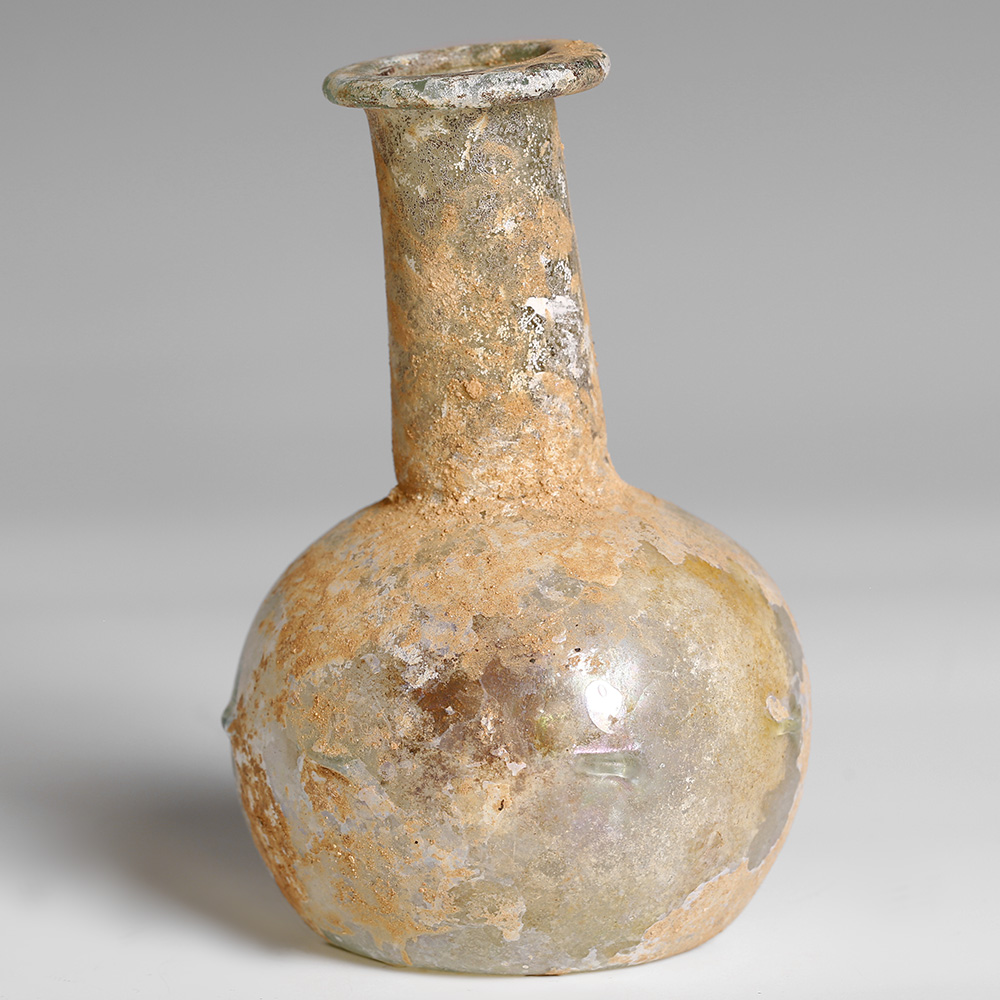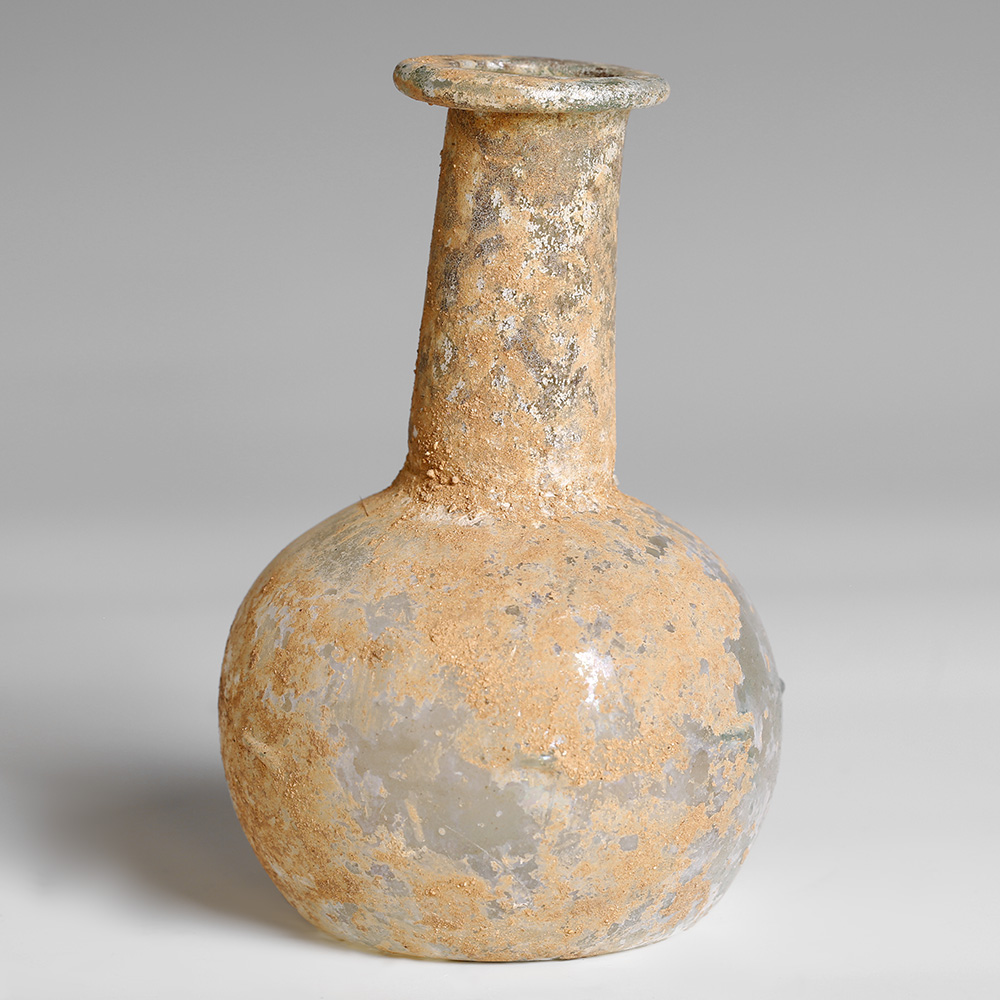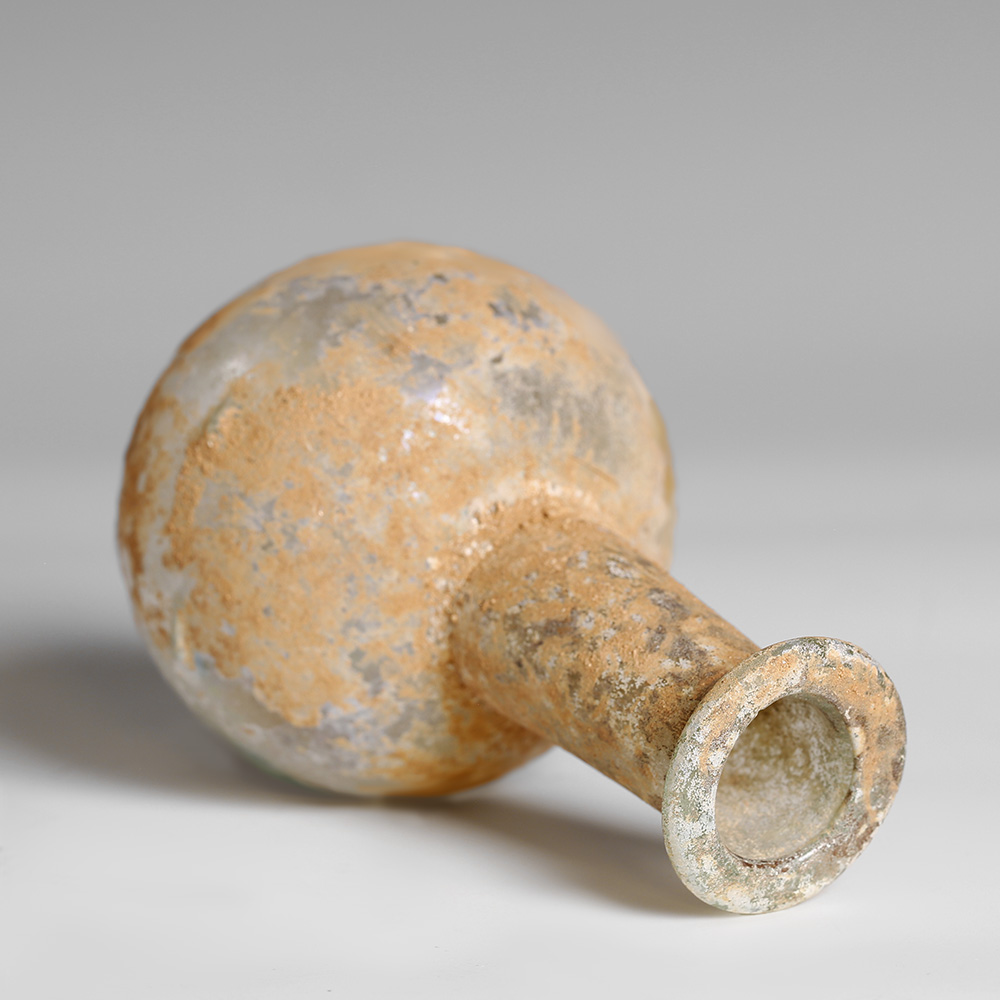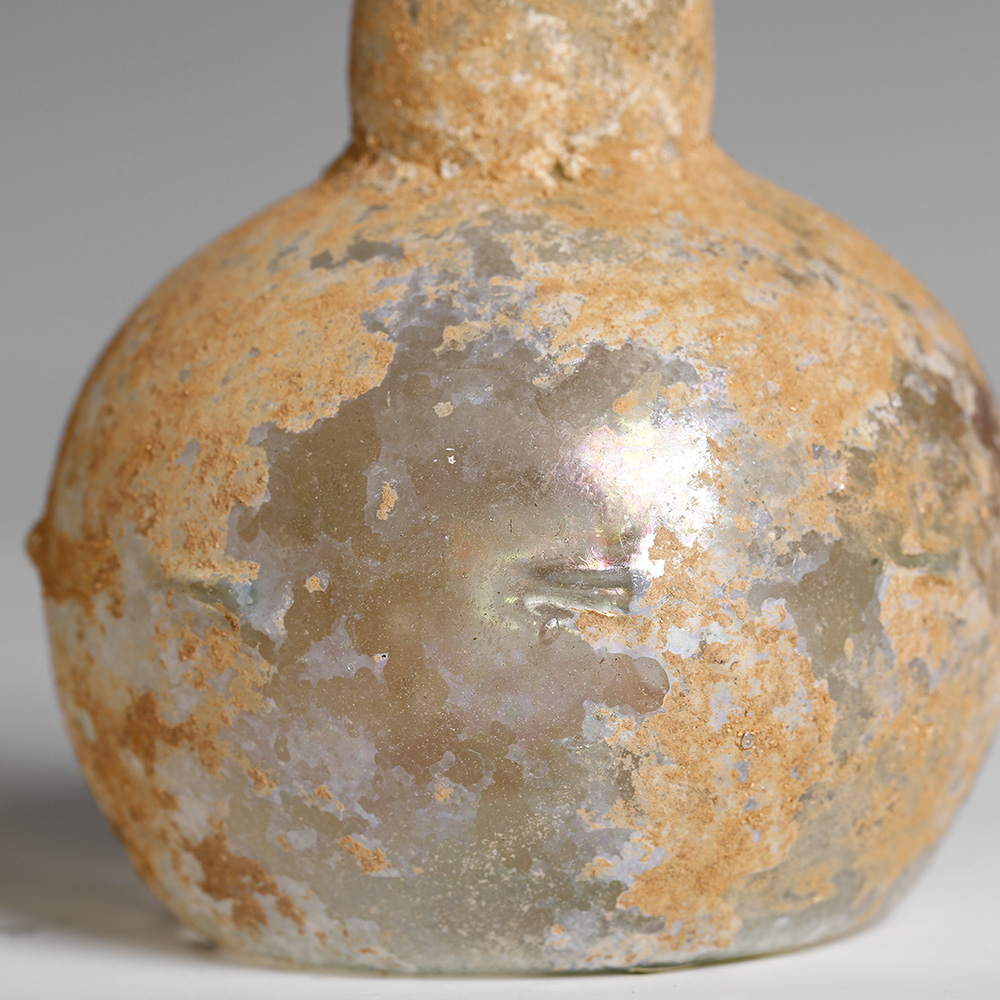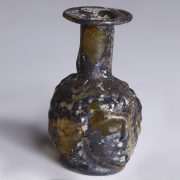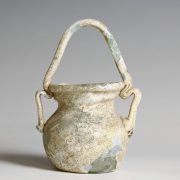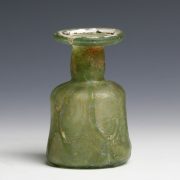Glass production evolved during the Roman Empire with the introduction of glassblowing, which allowed for a great variety of different shapes and styles to be constructed. The technique allowed for easier manipulation of the glass into more intricate designs allowing the vessels to have an assortment of functions. Glassblowing also allowed for a quicker paced production, the hot glass would be blown into a mould and then removed whilst still hot so that the glass maker could still work on it. Different minerals were added to create a variety of colours; the blue tint seen in this piece would have been created by adding cobalt oxide and copper oxide. The iridescence on Ancient Roman glass was unintentional, and was caused by weathering on its surface. The extent to which a glass object weathers depends mainly on the burial conditions; however, the humidity, heat, and type of soil in which the glass was buried in also all affect its preservation.
To find out more about Roman glass please see our relevant blog post: Ancient Roman Glass and Collecting Roman Glass.
